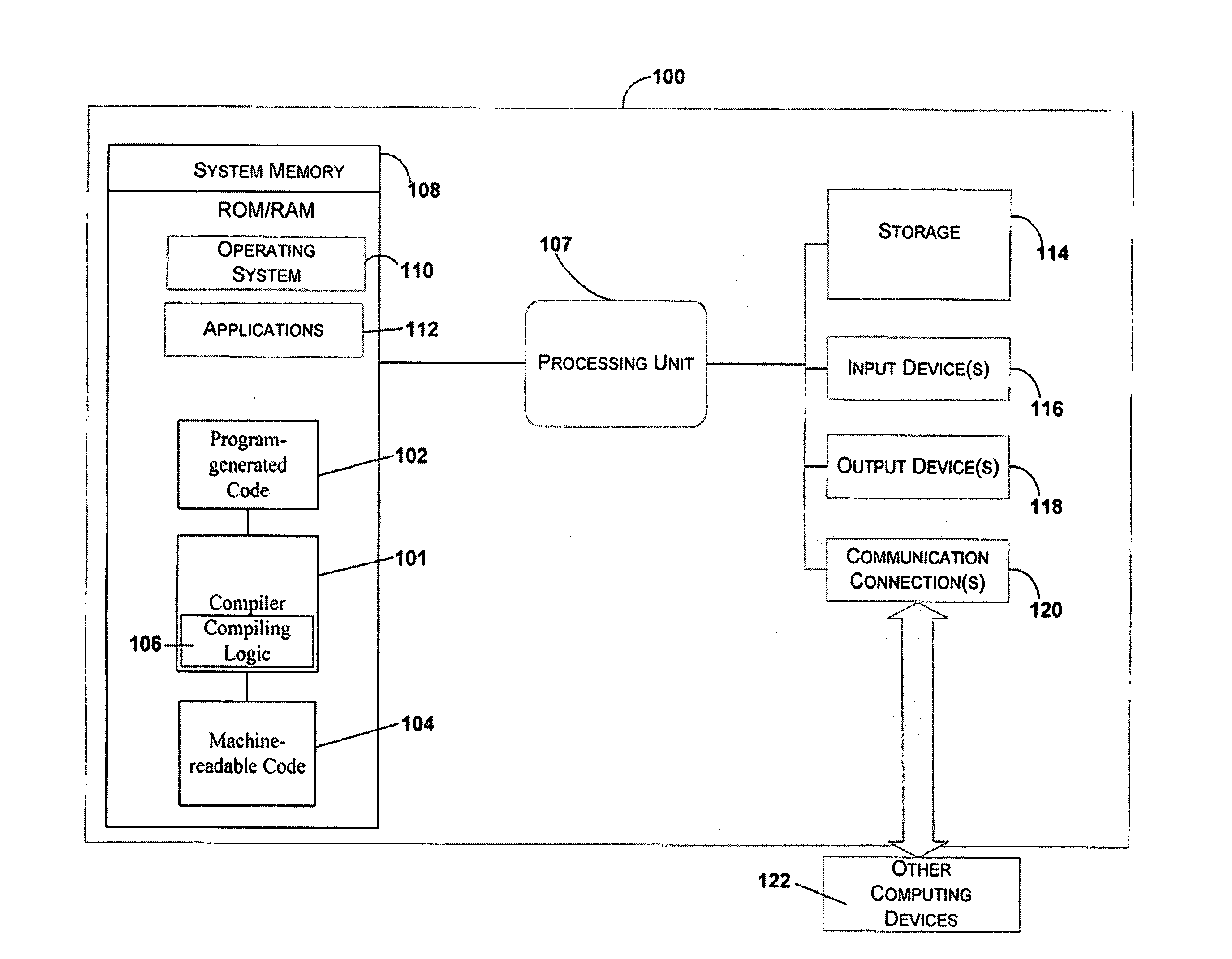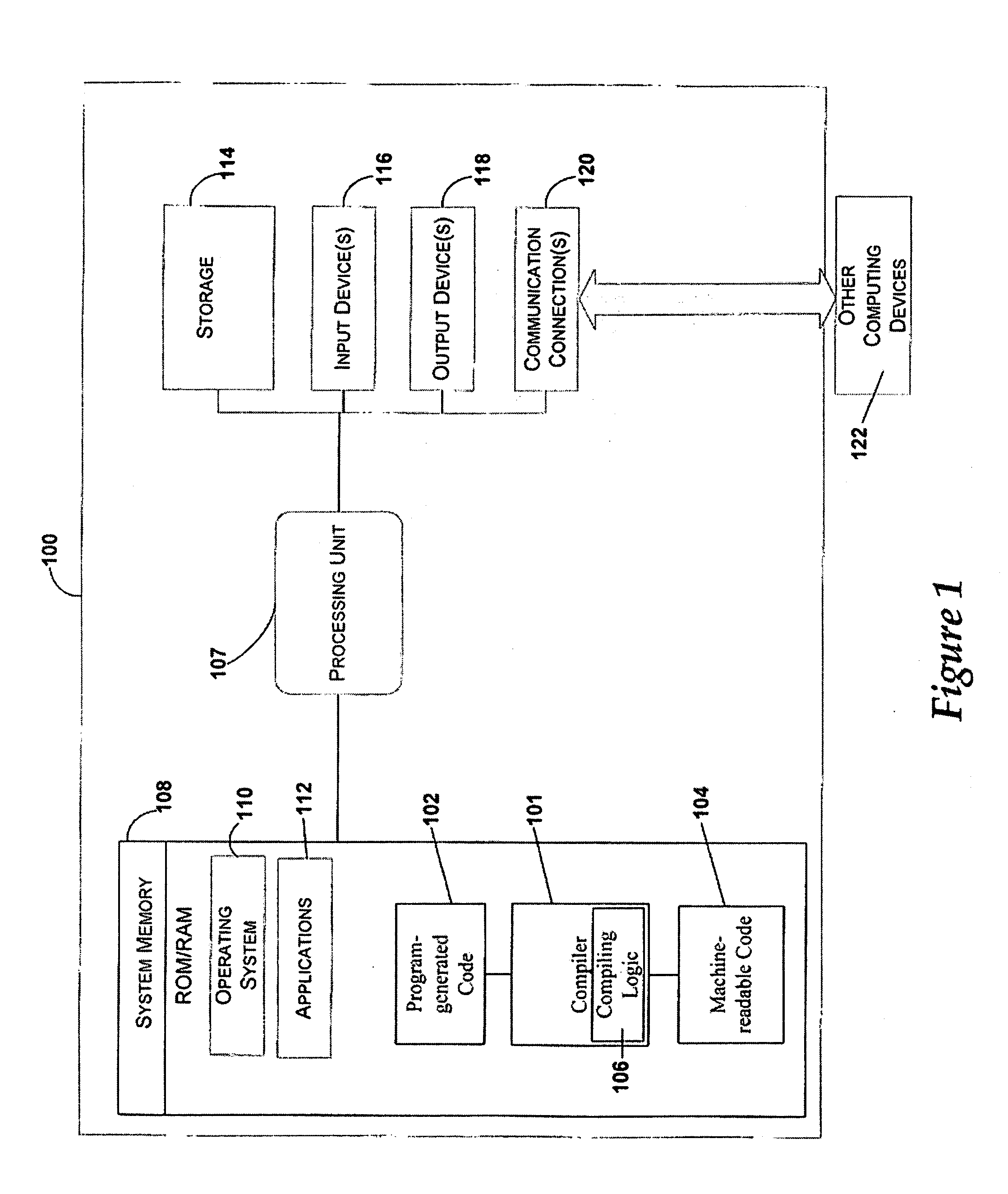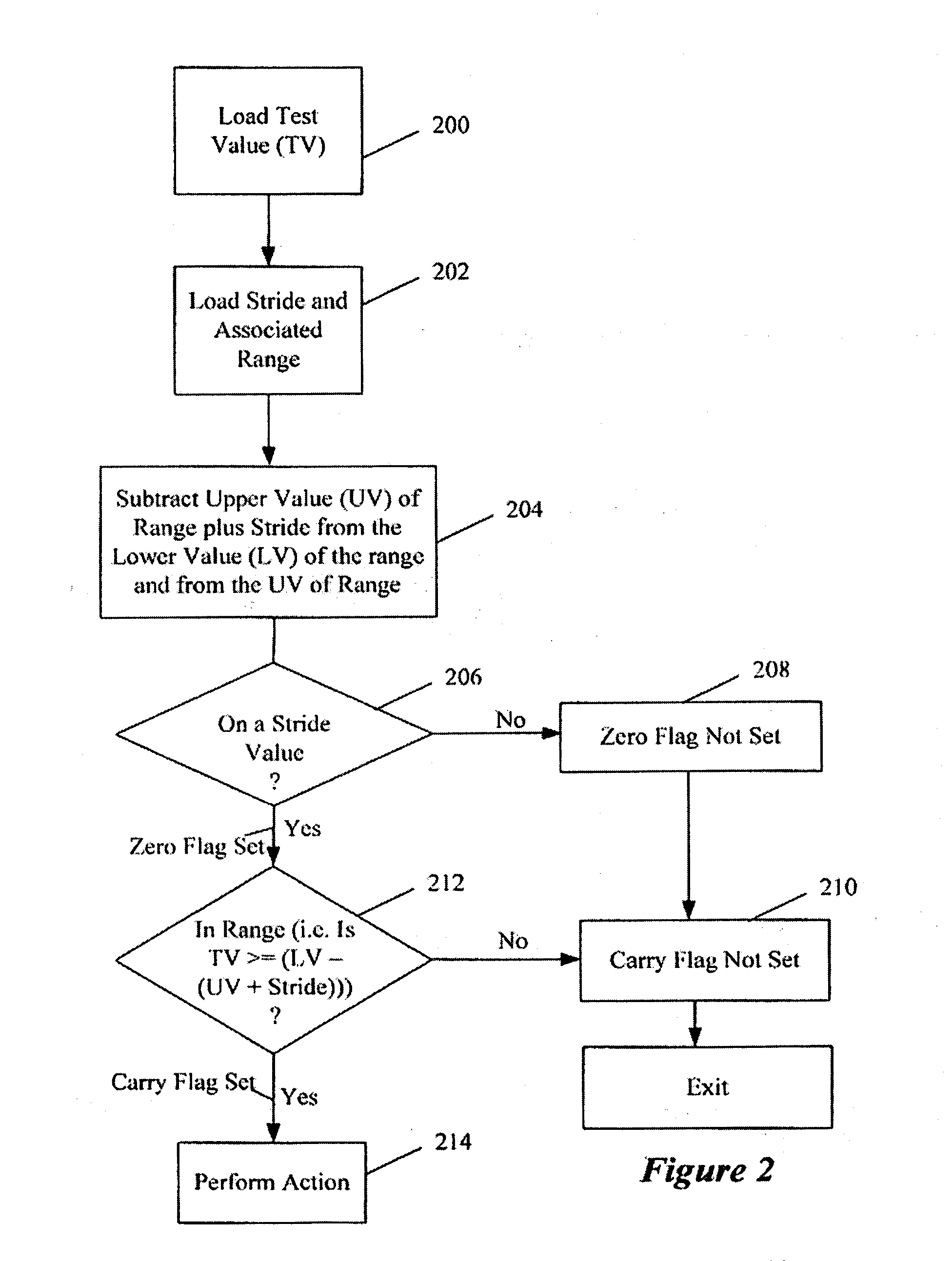Method and system for efficient range and stride checking
a efficient technology, applied in the field of efficient range and stride checking, can solve the problems of lack of elegance of the end user's written code, inability to recognize distances between values, and inability to achieve the precision of encoding techniques
- Summary
- Abstract
- Description
- Claims
- Application Information
AI Technical Summary
Problems solved by technology
Method used
Image
Examples
example 1
[0089]
The range is b to b + (s*n); where s = stride value,tag = test value, n = scalar number, M = 2N,N == max bits / scalar (e.g. 16, 32 or 64)).b −b +b (s + 1)*ns*n − nn) == 0, this can be transformed to −(s +1)*n && ((tag − b) % n) == 0M −M − nThis can be transformed further to M −(s + 1)*n(s + 1)*n M − n && ((tag − b) % n) == 0M −M − 1Which is equivalent to ((tag − b) % n) ==(s + 1)*n0 && M − (s + 1)*n (s + 1)*n
Note:
&& represents logical AND; % represents modulo; and == represents identical to.
[0090] As shown in Example 1, and described above, the compiling logic 106 eliminates one of the above three test conditions by transforming the case range to the uppermost end of the ring modulo (e.g. 232).
example 2
[0091]
n == 1bb + s*nb transformed to0 0s*ntag − b
[0092] The aspects of the methods and systems described herein may be implemented as functionality programmed into any of a variety of circuitry, including programmable logic devices (“PLDs”), such as field programmable gate arrays (“FPGAs”), programmable array logic (“PAL”) devices, electrically programmable logic and memory devices and standard cell-based devices, as well as application specific integrated circuits. Embodiment may also be implemented as microcontrollers with memory (such as EEPROM), embedded microprocessors, firmware, software, etc. Furthermore, aspects may be embodied in microprocessors having software-based circuit emulation, discrete logic (sequential and combinatorial), custom devices, fuzzy (neural) logic, quantum devices, and hybrids of any of the above device types. Of course the underlying device technologies may be provided in a variety of component types, e.g., metal-oxide semiconductor field-effect trans...
PUM
 Login to View More
Login to View More Abstract
Description
Claims
Application Information
 Login to View More
Login to View More - R&D
- Intellectual Property
- Life Sciences
- Materials
- Tech Scout
- Unparalleled Data Quality
- Higher Quality Content
- 60% Fewer Hallucinations
Browse by: Latest US Patents, China's latest patents, Technical Efficacy Thesaurus, Application Domain, Technology Topic, Popular Technical Reports.
© 2025 PatSnap. All rights reserved.Legal|Privacy policy|Modern Slavery Act Transparency Statement|Sitemap|About US| Contact US: help@patsnap.com



